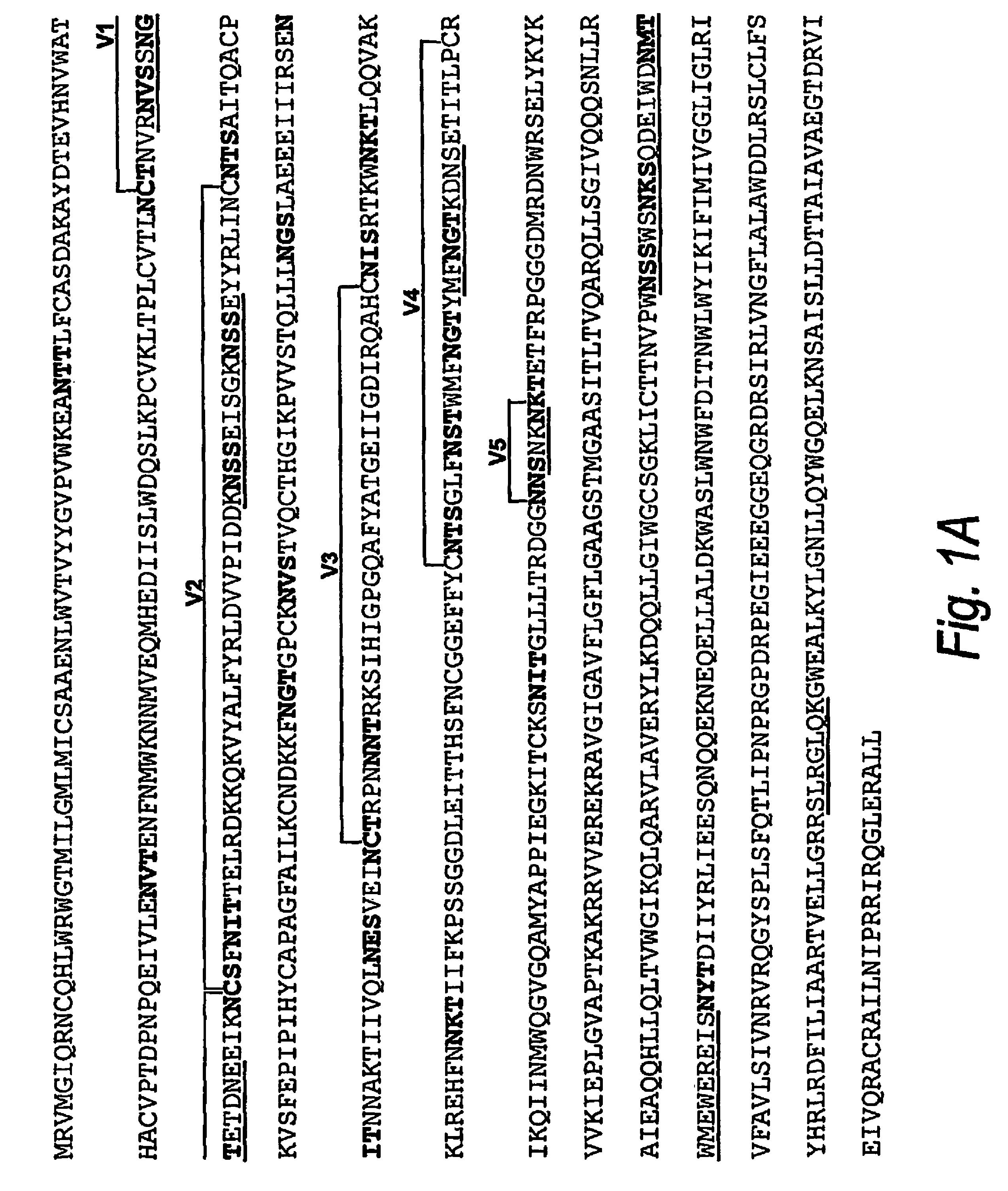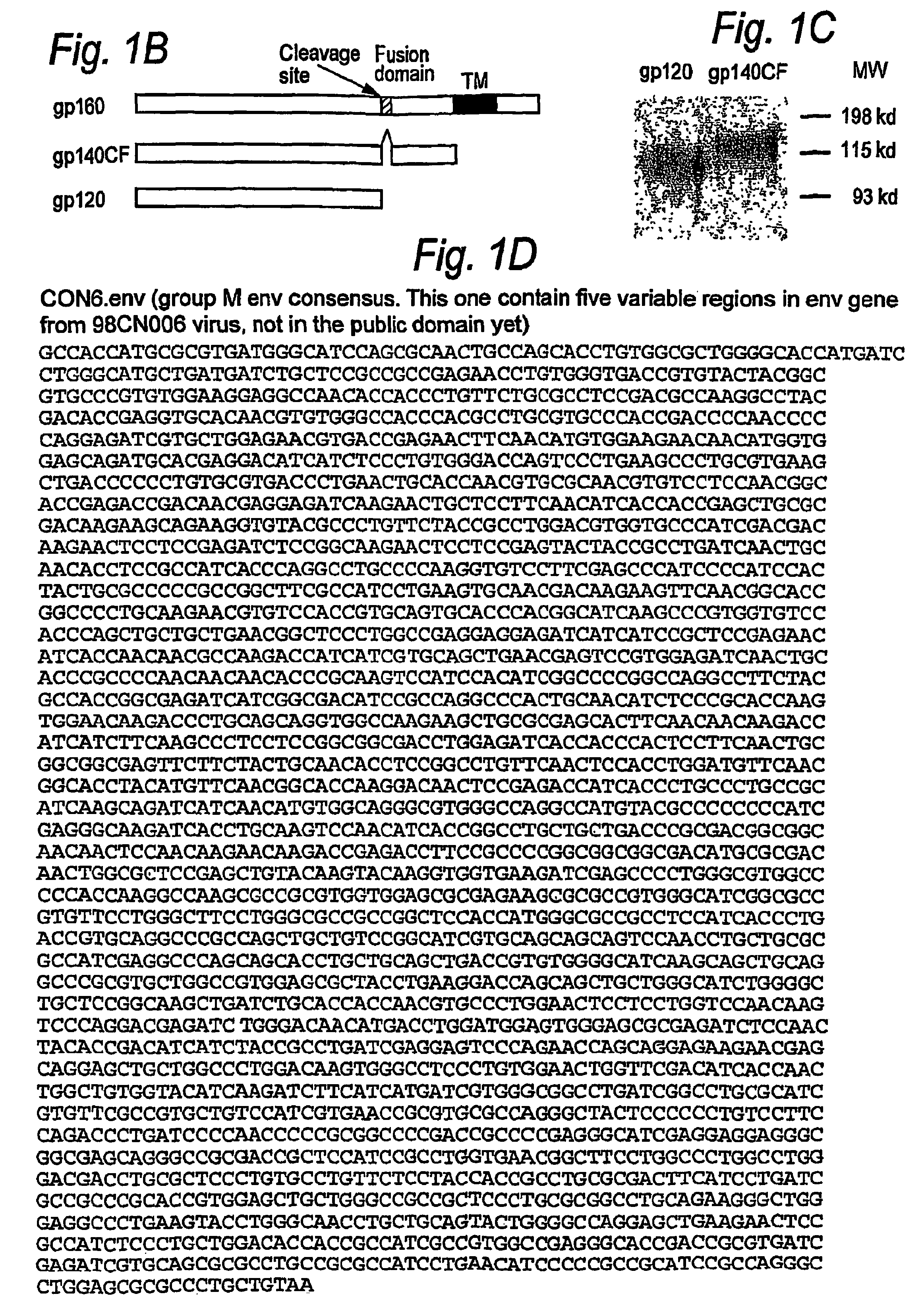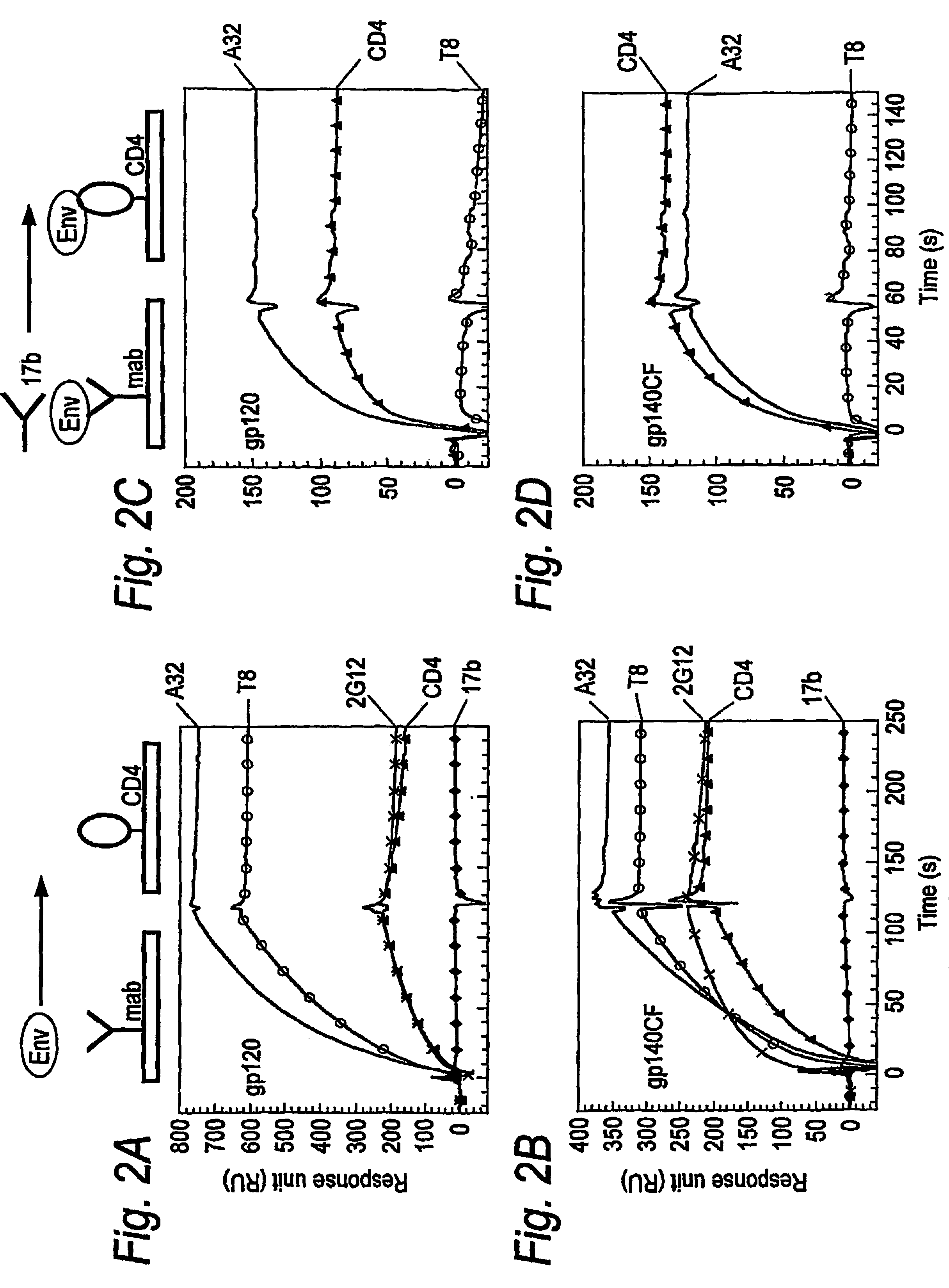Nucleic acids encoding modified human immunodeficiency virus type 1 (HIV-1) group M consensus envelope glycoproteins
a technology of human immunodeficiency virus and glycoprotein, which is applied in the field of immunogens, can solve the problems of difficult to consistently elicit cross-subtype t and b cell immune responses against all hiv-1 subtypes, and complicate the design of experimental hiv-1 immunogens
- Summary
- Abstract
- Description
- Claims
- Application Information
AI Technical Summary
Benefits of technology
Problems solved by technology
Method used
Image
Examples
example 1
Artificial HIV-1 Group M Consensus Envelope
Experimental Details
[0170]Expression of CON6 gp120 and gp140 proteins in recombinant vaccinia viruses (VV). To express and purify the secreted form of HIV-1 CON6 envelope proteins, CON6 gp120 and gp140CF plasmids were constructed by introducing stop codons after the gp120 cleavage site (REKR) (SEQ ID NO: 319) and before the transmembrane domain (YIKIFIMIVGGLIGLRIVFAVLSIVN) (SEQ ID NO: 320), respectively. The gp120 / gp41 cleavage site and fusion domain of gp41 were deleted in the gp140CF protein. Both CON6 gp120 and gp140CF DNA constructs were cloned into the pSC65 vector (from Bernard Moss, NIH, Bethesda, Md.) at SalI and KpnI restriction enzyme sites. This vector contains the lacZ gene that is controlled by the p7.5 promoter. A back-to-back P E / L promoter was used to express CON6 env genes. BSC-1 cells were seeded at 2×105 in each well in a 6-well plate, infected with wild-type vaccinia virus (WR) at a MOI of 0.1 pfu / cell, and 2 hr after in...
example 2
HIV-1 Subtype C Ancestral and Consensus Envelope Glycoproteins
Experimental Details
[0200]HIV-1 subtype C ancestral and consensus env genes were obtained from the Los Alamos HIV Molecular Immunology Database (http: / / hiv-web.lanl.gov / immunology), codon-usage optimized for mammalian cell expression, and synthesized (FIG. 6). To ensure optimal expression, a Kozak sequence (GCCGCCGCC) was inserted immediately upstream of the initiation codon. In addition to the full-length genes, two truncated env genes were generated by introducing stop codons immediately after the gp41 membrane-spanning domain (IVNR) and the gp120 / gp41 cleavage site (REKR), generating gp140 and gp120 form of the glycoproteins, respectively (FIG. 8).
[0201]Genes were tested for integrity in an in vitro transcription / translation system and expressed in mammalian cells. To determine if the ancestral and consensus subtype C envelopes were capable of mediating fusion and entry, gp160 and gp140 genes were co-transfected with a...
example 3
Codon-Usage Optimization of Consensus of Subtype C gag and nef Genes (C.con.gag and C.con.nef)
[0208]Subtype C viruses have become the most prevalent viruses among all subtypes of Group M viruses in the world. More than 50% of HIV-1 infected people are currently carrying HIV-1 subtype C viruses. In addition, there is considerable intra-subtype C variability: different subtype C viruses can differ by as much as 10%, 6%, 17% and 16% of their Gag, Pol, Env and Nef proteins, respectively. Most importantly, the subtype C viruses from one country can vary as much as the viruses isolated from other parts of the world. The only exceptions are HIV-1 strains from India / China, Brazil and Ethiopia / Djibouti where subtype C appears to, have been introduced more recently. Due to the high genetic variability of subtype C viruses even within a single country, an immunogen based on a single virus isolate may not elicit protective immunity against other isolates circulating in the same area.
[0209]Thus ...
PUM
| Property | Measurement | Unit |
|---|---|---|
| concentration | aaaaa | aaaaa |
| concentration | aaaaa | aaaaa |
| pH | aaaaa | aaaaa |
Abstract
Description
Claims
Application Information
 Login to View More
Login to View More - R&D
- Intellectual Property
- Life Sciences
- Materials
- Tech Scout
- Unparalleled Data Quality
- Higher Quality Content
- 60% Fewer Hallucinations
Browse by: Latest US Patents, China's latest patents, Technical Efficacy Thesaurus, Application Domain, Technology Topic, Popular Technical Reports.
© 2025 PatSnap. All rights reserved.Legal|Privacy policy|Modern Slavery Act Transparency Statement|Sitemap|About US| Contact US: help@patsnap.com



